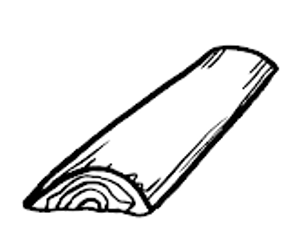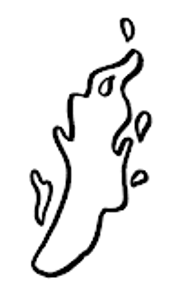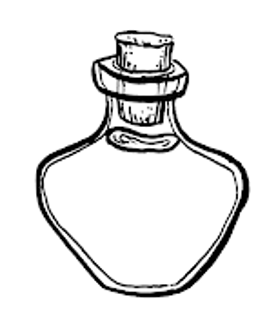A picture speaks more than a thousand words – especially when the words are in a language completely unfamiliar to the audience. This was the spark that led to the visual model introduced below. The Finnish Outdoor Teaching Handbook Ulkona opettamisen käsikirja had just been published, and I was preparing to present it at the 10th International Outdoor Education Research Conference (IOERC10) in Tokyo. Faced with 500 pages in Finnish and an English-speaking audience, I needed a way to convey the essence of the book. I extracted its core ideas and drafted a structural image of the fusion pedagogy of outdoor teaching. My youngest child turned this draft into a visual presentation, which enabled me to share the book’s contents effectively.
(Kaasinen & Myllyniemi, eds. Ulkona opettamisen käsikirja, Santalahti Publishing, 2023.)

This “campfire model” began to take on a life of its own. It has since served as the foundation for numerous workshops and discussions and has structured the practical parts of early webinars in the project Kestävyysosaamista ulkoluokkaan (Building Sustainability Competence in the Outdoor Classroom). The model is flexible and adaptable, functioning both as a practical tool for outdoor teaching and as a conceptual aid for understanding its pedagogical foundations. Below is a brief description and guide to using the model.
The Campfire is Always Built in Nature
The foundation of the model is rooted in a view of humanity and of nature: we are not separate from nature, nor is it a resource to be managed. We are but one small part of a vast web of life. While humans need nature to survive, nature does not need us.
 Logs Form the Campfire Base
Logs Form the Campfire Base
Fueling all teaching and learning are the fundamental reasons for what, why, and how we teach. In the campfire model, these foundations are represented by logs symbolizing various educational philosophies that support outdoor teaching. Central are environmental and sustainability education, encompassing biodiversity, climate education, ethics, and the goal of nurturing students toward full human potential. Other logs might include foundations related to physical, psychological, social, or emotional development. The size and number of logs vary depending on the lesson topic, the group, and the day. One log may be a large trunk, while another serves as mere kindling. Some days call for a grand bonfire, others just a spark.
 Pedagogical Flames Rise from the Logs
Pedagogical Flames Rise from the Logs
The flames represent the pedagogies chosen by the teacher on any given day. Like the logs, the flames vary in size and intensity. Some pedagogies are constant companions – such as experiential learning and positive pedagogy. Kolb’s experiential learning cycle (1984) fits perfectly in outdoor environments, emphasizing reflection, active participation, practical application, and personal meaning. Positive pedagogy emphasizes seeing the good, teaching emotional skills, fostering resilience, and cultivating a sense of community and hope.
Other suitable pedagogies include adventure education, which leverages experience, teamwork, and challenges; and special education methods, beneficial for all learners. These include differentiation, concreteness, breaking tasks into steps, safe routines, and learner strengths.
Less familiar is Wild Pedagogies, a framework aiming to redefine the human-nature relationship. Its guiding touchstones include:
- Nature as Co-Teacher
- Complexity, the Unknown, and Spontaneity
- Locating the Wild
- Time and Practice
- Socio-Cultural Change
- Building Alliances and the Human Community
Many more pedagogies are well-suited for the outdoors: drama and arts pedagogies for creativity and expression, the Varga–Neményi method for active mathematics, STEM/STEAM learning, invention pedagogy, place-based and integrated learning approaches. The sea of pedagogical flames is vast and each flame add its own spark to the whole.
 The Cauldron Frames the Lesson
The Cauldron Frames the Lesson
The cauldron represents the curriculum and the overall goals of education. When this cauldron contains the principles of ecosocial education, human growth, and the pursuit of a good life, it clearly has both volume and ambition.
 The Broth is the Didactics and Methods
The Broth is the Didactics and Methods
The broth inside the cauldron consists of the teaching methods and didactic interactions between teacher and students. These methods aim to support learning in the best way possible and can vary within one lesson: pair discussions, group games, movement activities, or small group research. Didactics refers to the dynamic between teacher, learner, and subject. The teacher’s knowledge of both the content and the students enables meaningful encounters that promote learning. The broth thus holds the pedagogical actions that support outdoor learning.
 The Recipe Adds Flavor
The Recipe Adds Flavor
Like any good recipe, the outdoor lesson combines multiple ingredients that vary with the theme, weather, students’ interests, and spontaneous moments. While some parts are planned, nature’s affordances and the unexpected often shape the final flavor. The true magic of outdoor teaching often lies in seizing the moment.
 The Magic Brew of Fusion Pedagogy
The Magic Brew of Fusion Pedagogy
Even when the lesson theme, location, materials, and group remain constant, no two outdoor lessons are the same. Each is unique, shaped by the day’s circumstances and the guiding principle of Nature as Co-Teacher. Every outdoor educator becomes a bit like the druid Getafix from Asterix, concocting their own learning potion. And what joy it brings when the potion works and something truly special occurs – something that could never have happened indoors alone.

Blog Author
Ulla Myllyniemi
Ulla works as a trainer in Environmental and Sustainability Education at the SYKLI Environmental College and as an expert in outdoor learning. In addition, she is the co-editor of The Handbook of Teaching Outdoors.
